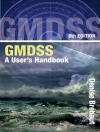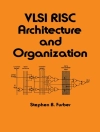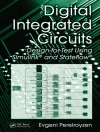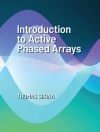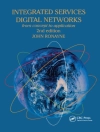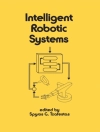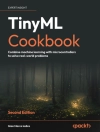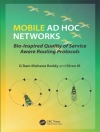WCDMA (Wideband Code Division Multiple Access), an ITU standard
derived from code division multiple access (CDMA) is officially
known as IMT-2000 direct spread. WCDMA is a third generation mobile
wireless technology offering much higher data speeds to mobile and
portable wireless devices than commonly offered in today’s
market. WCDMA is a relatively new technology and there is
little information in the public domain about specific design
issues. The proposed book will discuss UMTS/WCDMA from the
perspective of a potential development engineer, who may have
experience of GSM but none of WCDMA technology. The book will
outline the design specifications and potential problems and
solutions faced by by an engineer designing a mobile device such as
a handset.
WCDMA: Requirements and Practical Design:
* Offers in-depth coverage of the critical issues in designing a
UMTS handset modem.
* Discusses the practical design elements of a UMTS
modem.
* Authored by leaders in their field, working at
Ubinetics.
Highly relevant to professional software engineers, Design
engineers, Electrical engineers (RF base-band, DSP software,
protocol software), technical managers, postgraduate students and
academics.
Tabella dei contenuti
Preface page.
Acknowledgements.
Abbreviations.
1 Introduction.
1.1 Evolution and Revolution of Mobile Telephony.
1.2 The Third Generation Partnership Project.
1.3 3GPP Terminology.
1.4 The Journey of a Bit.
1.5 Structure of the Book.
2 RF and Baseband Processing.
2.1 Introduction.
2.2 UMTS Radio Requirements.
2.3 Receiver RF Design.
2.4 Receiver Baseband Design.
2.5 Transmitter Baseband Design.
2.6 Transmitter RF Design.
2.7 Future Trends.
3 Physical Layer Chip Rate Processing.
3.1 Introduction.
3.2 Spreading and Scrambling.
3.3 Physical Channels.
3.4 The Receiver.
3.5 Cell Search.
3.6 Power Control.
3.7 Handover.
3.8 Transmit Diversity in the Downlink.
3.9 Physical Layer Procedures.
3.10 Measurements.
3.11 Compressed Mode.
4 Physical Layer Bit Rate Processing.
4.1 Introduction.
4.2 Transport Channels, Formats and Combinations.
4.3 Overview of the Bit Rate Processing Chain.
4.4 Rate Matching.
4.5 Convolutional Encoding and Decoding.
4.6 Turbo Encoding and Decoding.
4.7 TFC Detection.
4.8 Compressed Mode and the BRP.
4.9 BRP Limitations for Different Tr CHs and CCTr CHs.
4.10 Conclusions.
5 Type Approval Testing: A Case Study.
5.1 Introduction.
5.2 History: the Making of the 3GPP DPCH BLER Requirements.
5.3 Lab Testing.
5.4 Exemplary Measurement Results.
6 Medium Access Control.
6.1 Introduction.
6.2 MAC Functional Partitioning.
6.3 MAC Receive Functionality.
6.4 MAC Transmit Functionality.
7 Radio Link Control.
7.1 Introduction.
7.2 Transparent Data Transfer Service.
7.3 Unacknowledged Data Transfer Service.
7.4 Acknowledged Data Transfer Service.
8 PDCP.
8.1 Introduction.
8.2 Overall Architecture.
8.3 PDCP Interface.
8.4 Header Compression.
8.5 SRNS Relocation.
8.6 PDCP Header Formats.
8.7 Handling an Invalid PDU Type and PID.
9 Broadcast/Multicast Control.
9.1 Introduction.
9.2 CTCH Scheduling.
10 RRC.
10.1 Introduction.
10.2 Cell Selection and Reselection.
10.3 Reception of Broadcast System Information.
10.4 Paging and Notification .
10.5 Establishment, Maintenance and Release of an RRC Connection Between the UE and UTRAN.
10.6 Establishment, Reconfiguration and Release of Radio Access Bearers.
10.7 Assignment, Reconfiguration and Release of Radio Resourcesfor the RRC Connection.
10.8 RRC Connection Mobility Functions.
10.9 Routeing of Higher Layer PDUs.
10.10 Control of Requested Qo S.
10.11 UE Measurements.
10.12 Power Control.
10.13 Arbitration of Radio Resources on Uplink DCH.
10.14 Integrity Protection.
10.15 Ciphering Management.
10.16 PDCP Control.
10.17 CBS Control.
11 Speech Coding for UMTS.
11.1 Introduction – the Adaptive Multirate (AMR) Speech Codec.
11.2 AMR Structure.
11.3 Linear Prediction Analysis.
11.4 LSF Quantization.
11.5 Pitch Analysis.
11.6 Fixed Codebook with Algebraic Structure.
11.7 Post Processing.
11.8 The AMR Codec’s bit Allocation.
11.9 Speech Codec’s Error Sensitivity.
11.10 Conclusions.
12 Future Developments.
12.1 Introduction.
12.2 3GPP Release 5: HSDPA.
12.3 Location-based Services.
12.4 CPICH Interference Cancellation and Mitigation.
12.5 Transmit Diversity for Multiple Antennas.
12.6 Improved Baseband Algorithms and Technology Trends.
A Appendix A: ML detection for uncoded QPSK.
B Appendix B: SIR computation.
References.
Index.
Circa l’autore
Rudolf Tanner and Jason Woodard are the authors of WCDMA: Requirements and Practical Design, published by Wiley.


